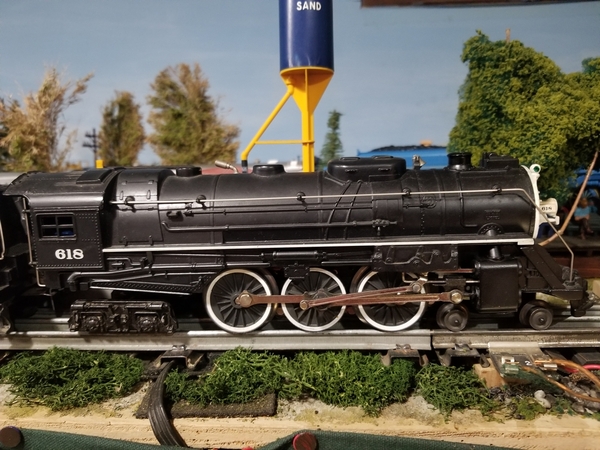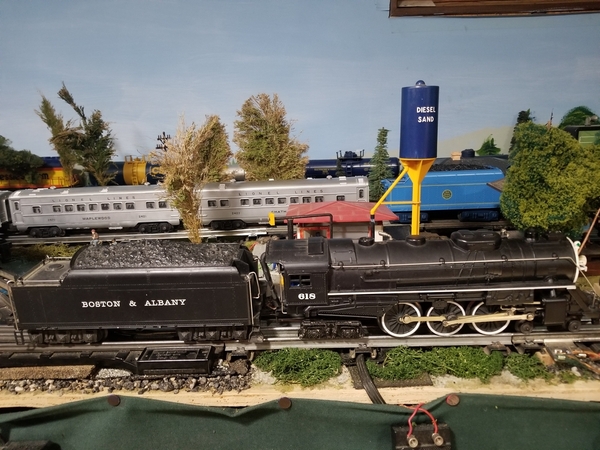I have a Lionel Boston & Albany Hudson # 618, which I believe was manufactured in the late 1980s. I don't have the product number because I bought it over 20 years ago without the box from a LHS.
It runs OK at slow speed, but it often makes a wheezing sound and slows down at moderate to fast speed.
The problem is not lubrication. I already recently sent it to a very reputable train repairman, who thought he fixed it by thoroughly lubricating it, but it still has the same problem: wheezing and slowing down at moderate to high speed.
After reading John's current thread about the gear dilemma, the thought occurred to me that maybe my engine has a gear problem, and I decided to start this thread to get some ideas for a diagnosis and possible solutions for fixing it.
Here are photos of the engine:
Arnold
















